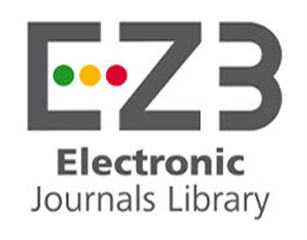APPROACH TO MULTIMODAL MODELLING EFFECTIVE STATE REGULATION OF FOREIGN ECONOMIC ACTIVITY
DOI:
https://doi.org/10.32689/2617-2224-2021-3(28)-3Keywords:
state regulation, foreign economic opportunities, foreign economic activity, globalization, competitiveness, resource and production potentialAbstract
It is noted that the globalization of world economic relations contributes to the deep qualitative transformation of foreign economic relations of states related to the search for ways to integrate into the system of world economic relations. The beginning of the XXI century was the final stage of a long transition period, during which many countries, including Ukraine, have to move from stagnation to development. At the same time, it is important to develop such strategic guidelines that would aim at the organic closure of foreign economic opportunities of this process with those internal prerequisites that can help accelerate it. At the heart of economic globalism is the theory of neoliberalism and the free market. It applies to the entire world economy because it is based on the theoretical premise that the fruits of globalization are enjoyed by both developed and developing and transforming countries, exporters and importers of international goods, services and capital, technology developers and consumers who adapt to them. Proponents of financial liberalization argue that the free movement of capital ensures the optimal distribution and use of savings from the standpoint of the world economy, stimulates economic growth and the spread of new technologies.
It is determined that the states with reformed economies show some caution in choosing models of economic growth and try to focus as much as possible on their own resource and production potential as a guarantor of economic stability and security. The choice of each of these models is ambiguous. The condition for Ukraine’s progress through economic progress is, first of all, the concentration of its own efforts and resources on the formation of an efficient, technologically advanced and competitive market economy. In the near future, the emphasis of economic policy is objectively shifted towards the development of domestic production and ensuring that it supports the needs of the domestic market. The implementation of an export-oriented model poses a threat to national security. The fact that the export quota will remain at the current level also testifies in favour of the careful inclusion of the country’s economy in globalization processes in the near future. Giving priority to the policy and strategy of import substitution in foreign economic activity, the task is to create conditions for the formation of the national economic complex in the first quarter of the XXI century mainly on the basis of domestic resources and market with a consistent increase in medium and high-tech exports.
References
Географічна структура зовнішньої торгівлі України товарами. Зовнішньоекономічна діяльність. / Державна служба статистики України. URL: http://www.ukrstat.gov.ua/ (дата звернення: 13.09.2021 р.).
Єдине вікно для міжнародної торгівлі. / Міністерство фінансів України. URL: https://mof.gov.ua/uk/the_only_window_for_international_trade-472 (дата звернення: 23.09.2021 р.).
Калькулятор митної вартості та платежів при митному оформленні автомобіля. / Державна митна служба України. URL: https://calc.customs.gov.ua/# (дата звернення: 14.09.2021 р.).
Митне оформлення автомобіля. / Державна митна служба України. URL: https://customs.gov.ua/mitne-oformlennia-avtomobilia (дата звернення: 14.09.2021 р.).
Окремі показники спеціальної митної статистики декларування за період 2014–2020 років. Режим спільного транзиту (NCTS). / Державна митна служба України. URL: https://customs.gov.ua/rezhimspilnogotranzituncts (дата звернення: 13.09.2021 р.).











